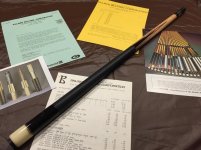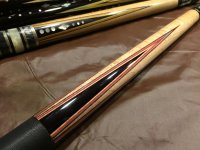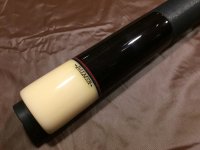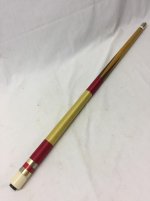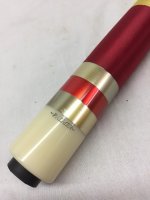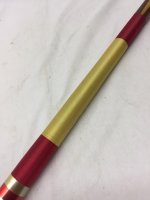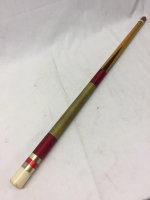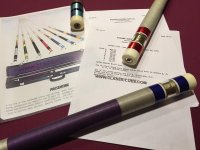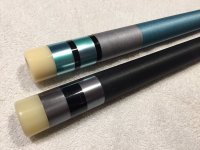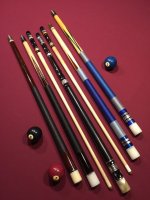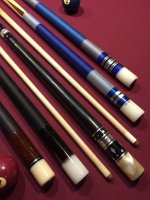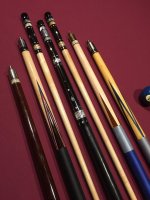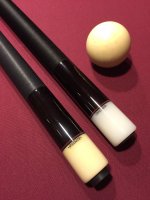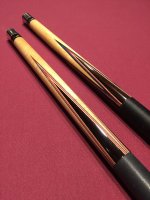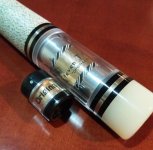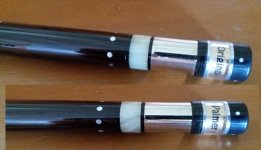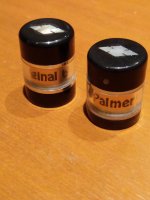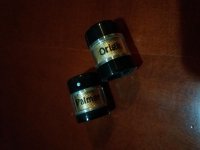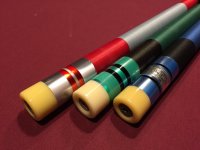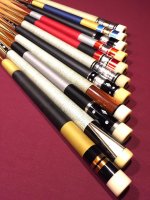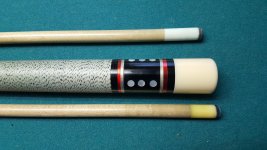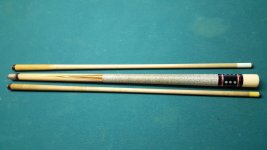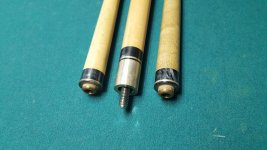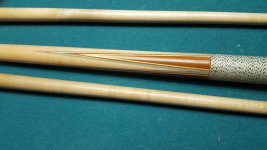Palmer Third Catalog
The Third Catalog - Or - Let's Offer Something For Everyone
It can be argued that the cues in the catalogs that preceded the Third Catalog generally had a family resemblance. Yes there were the wedge and Rambow tributes 2, 4, C, & H but from a design standpoint nothing strayed too far from home.
Fast forward to the Third Catalog and it seems that Pete Balner decided that the line should not only be expanded in number but the company should have a cue for every budget and style up to and including a custom cue they had already been making for select customers, the Model 20.
The line started with simple unadorned merry widow cues in various woods, moved onto simple house cue style conversions with and without plastic rings and with and without the familiar windows, and onto some new style cues with different MOP and wood inlays including a few with forearms made by a guy in Pennsylvania by the name of Gus Szamboti. The line even included a maple into maple spliced cue with teal veneers.
It was a diverse line of cues. Palmer didn't abandon the classic designs they helped make famous but those designs were in the minority. Even with that being the case, their grandest cue, the Model 20 was still an extension of the designs that came before it and did not include any of the design elements that characterized the fresh designs of the Models 12, 13, 15, 18, & 19.
One curious throwback in the line was the Model 14, which followed the lines of the First Catalog Model 5. The model had been dropped from the Second Catalog, but reappeared in the new catalog and to this day the Models 5 and 14 are mistaken for one another.
I would be remiss if I didn't mention that for the first time in their history, one element was missing: the Titlist. For reasons unknown to me, not one of the cues in the Third Catalog was made using a Titlist blank. Possibly they were in short supply and possibly since so few of the models had veneered forearms, that they decided to concentrate on other designs.
Palmer had one foot firmly planted in the future but was not yet ready to let go of it's past.
In some ways, this was it though. Yes the future would bring the PB line, Pete Margo's PM cues, as well as the Ray Martin line, but the era of the VHS tape beckoned and Pete's attention and focus was straying.
Was the PB line what would have been a "Fourth Catalog" or would Pete have come up with something different.
All speculation............
